This article was supposed to be a complimentary ode to Jerry Blevins. Unfortunately, his season has hit a few bumps over the last couple of weeks:
Blevins has given up 7 runs in his past 13 appearances. He only allowed 3 in his first 30.
— Steve Gelbs (@SteveGelbs) July 4, 2017
Now, it’s not as though Blevins has completely turned into a pumpkin, or even that his struggles are entirely his fault. Even after Terry Collins eased up on his heavy workload, Blevins still leads the MLB in appearances with 43 in the Mets’ first 83 games.
Despite that, he’s well on his way to his second consecutive stellar season in Flushing. He’s been the one of the more consistent members of the Mets’ staff, and curiously leads all of those high-octane arms with a strikeout rate of 32.2%.
In fact, Blevins is among the league leaders in strikeout rate without throwing a single pitch above 92 mph all season. Velocity certainly isn’t his calling card, but it also hasn’t kept him from racking up the punch-outs. Consider this graph showing the MLB strikeout leaders along with their average fastball velocity:
No pitcher with a higher strikeout rate than Blevins throws a slower fastball. While he’s not blowing guys away with the heat, he is known to have a nice curveball. Over the last two seasons, he has the fifth most valuable curve among relievers according to FanGraphs’ pitch type values. This season, Blevins is throwing that fantastic curveball almost 50% of the time!
Don’t worry about the 2015 season, where he threw all of five innings before suffering a season-ending broken arm. Fast forward to 2017 again, and Blevins has basically become a two-pitch pitcher. He’s completely ditched his cutter, and rarely goes to the changeup. According to Pitchf/x, Blevins throws the curve more often than any other pitcher in the MLB.
You’d think that narrowing your pitch mix would make Blevins more predictable. Surprisingly enough, that couldn’t be further from the truth. In fact, Blevins is having more success than ever with his breaking ball.
Just to be crystal clear, that’s an ISO of .015 on Jerry Blevins curveballs in 2017.
Last year, Blevins’ had a good curveball. This year, he has a great curveball. Let’s go have some fun and figure out why.
Well, that was easy enough. Blevins somehow managed to add almost three inches of horizontal movement to his curve, and bumped up his vertical movement by almost an inch to boot. According to Pitch Info, Blevins’ curve now has the second best horizontal movement among all relievers.
So last year, Blevins had good horizontal movement. This year, he has great horizontal movement. Let’s (again) go have some fun and figure out why.
You don’t just magically add three inches of break to a pitch overnight, so it makes sense that this was the result of a substantial mechanical change. Using data from when the Mets are on the road, (to remove any calibration bias from Citi Field’s tracking system) Blevins’ vertical release point has decreased by almost a quarter of a foot. Let’s get an idea for what this new release point looks like.
For your reference, the difference between the higher release point and the lower in that animation is exactly 0.25 feet. It’s not as though Blevins has all of a sudden become a submariner, but it’s not an insignificant change either.
Thinking mechanically for a second, it seems reasonable that adjusting the release point will affect the movement of a pitch. Sergio Romo, for example, gets tons of movement with a lower arm slot, so there could certainly be a connection there.
Interestingly enough, there very well might be. Take a look at this graph of all of Blevins’ curveballs at home over the last two years with the vertical release plotted against horizontal movement:
It’s not perfect, but it’s a reasonably strong relationship between the two. So what we’ve learned here is that a lower release point helps Blevins generate more horizontal movement on his curve.
The question remains, however, whether this adjustment was made after a tip from the front office, or just Blevins fiddling around with his release point in bullpens. Either way, this new arm slot has put his curveball on another level, and his outstanding results from early in the season are sure to return soon enough (or so the team hopes).
Photo credit: Noah K. Murray – USA Today Sports

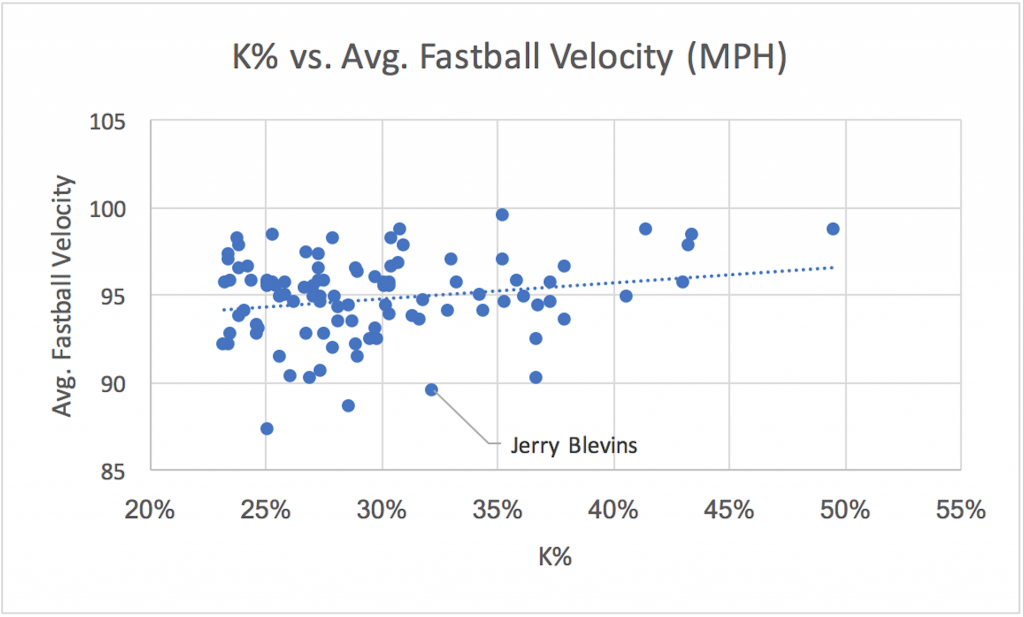
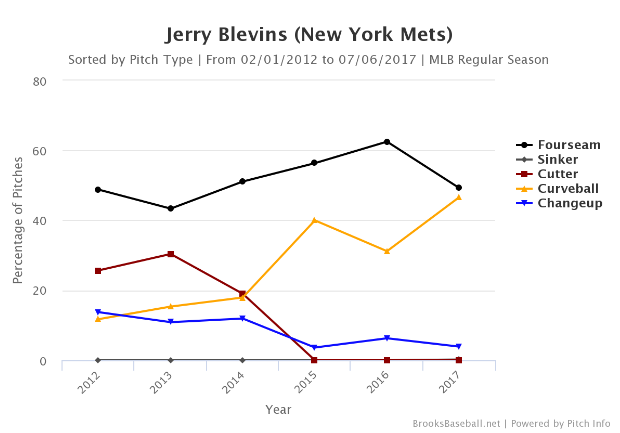
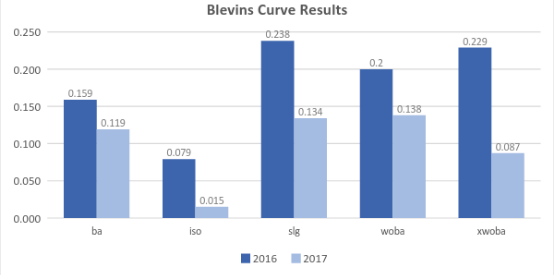


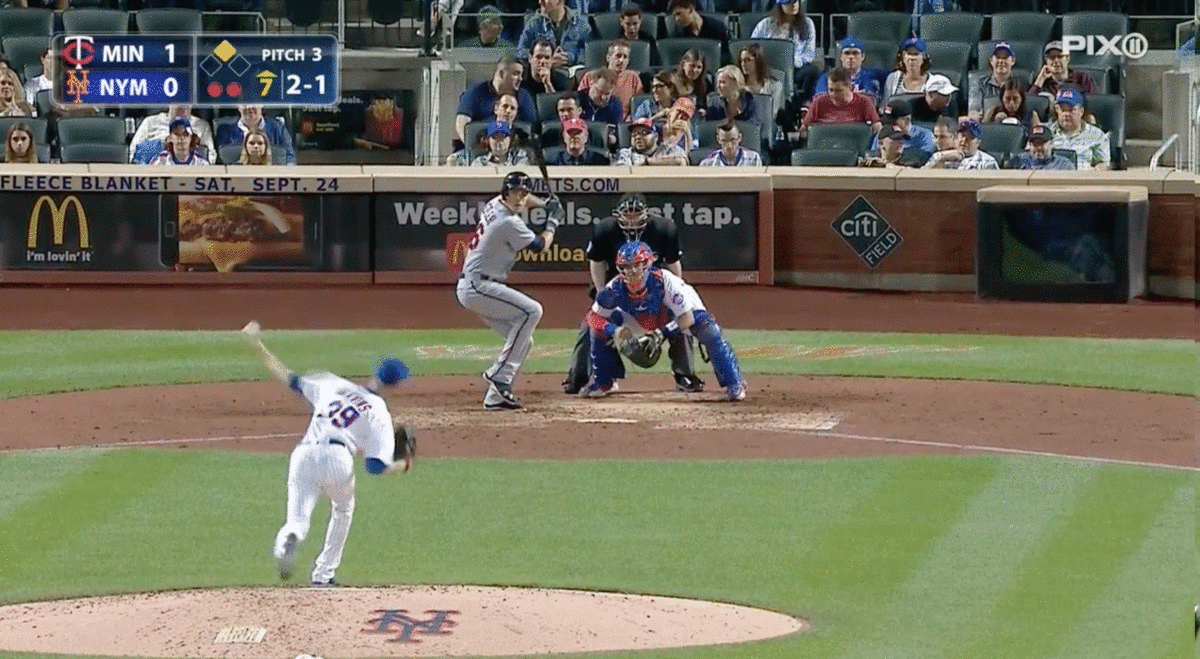
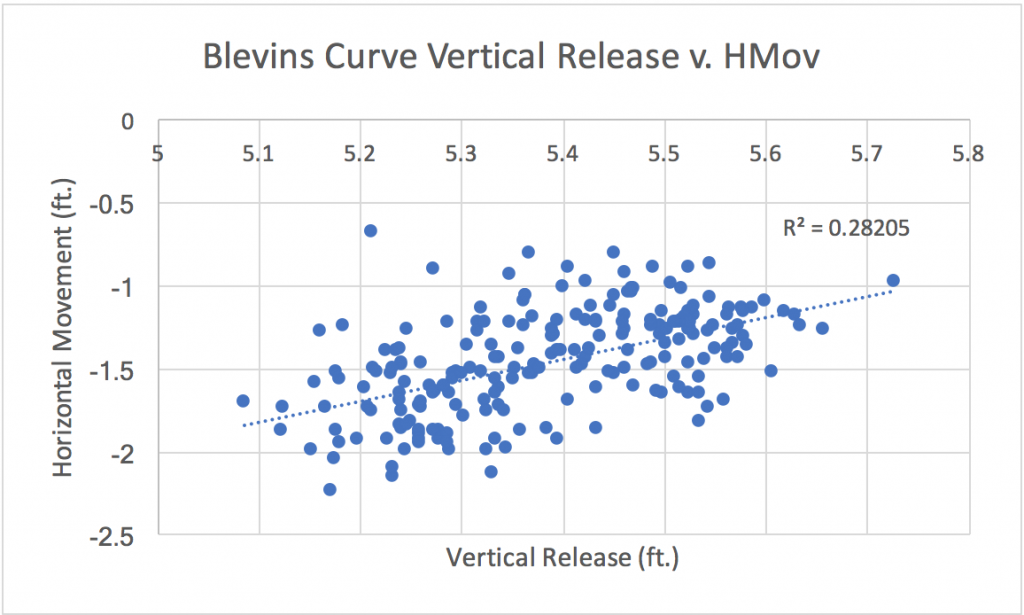
Wow! A tour-de-force analysis of Blevins curve. Very nice. I was surprised that Blevins didn’t get a 3 year deal from any team last winter. I think Jerry was surprised too. He’ll probably be a trade target this month, but hopefully the Mets hold on to him and his team friendly option for next season.
Thanks! He’s been great, and the Mets were lucky that no other team offered a deal like that this offseason. Either way, a very valuable piece in the Mets’ pen.